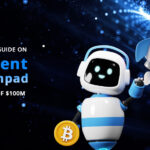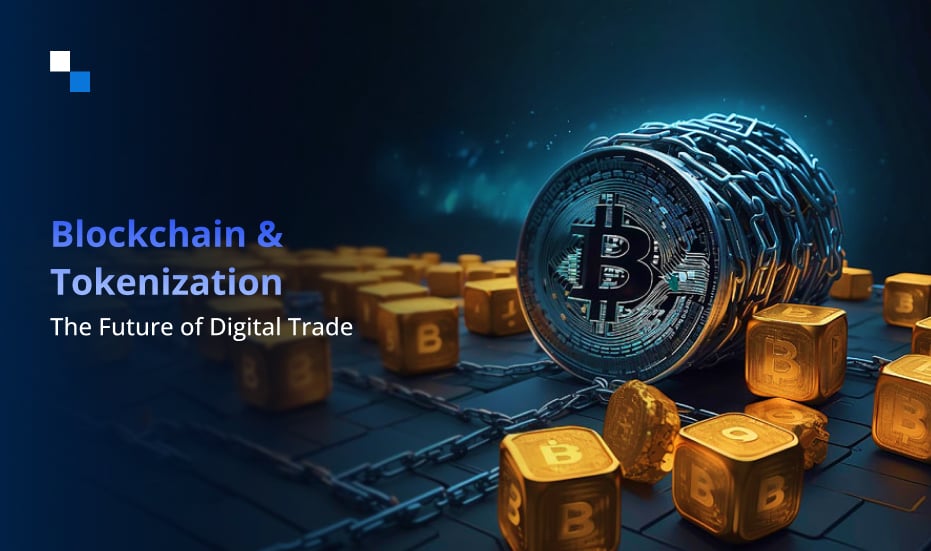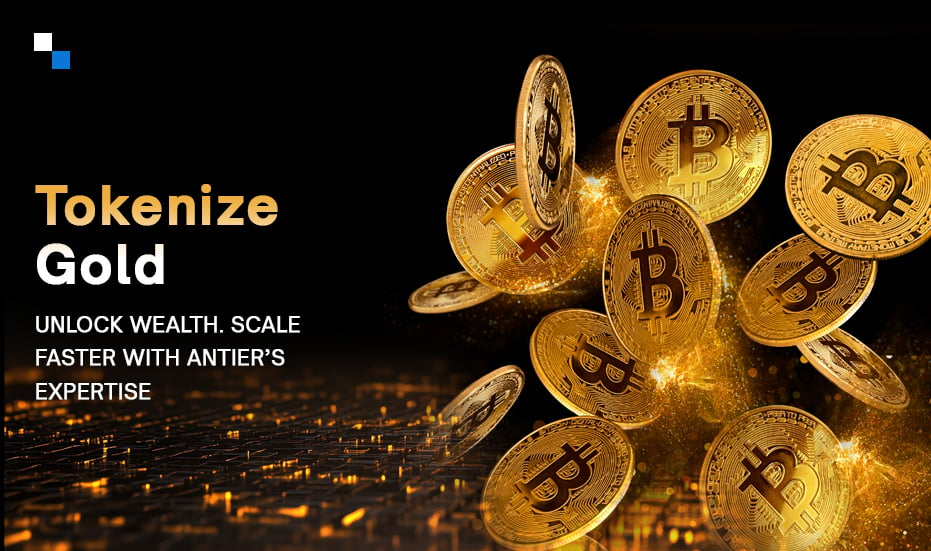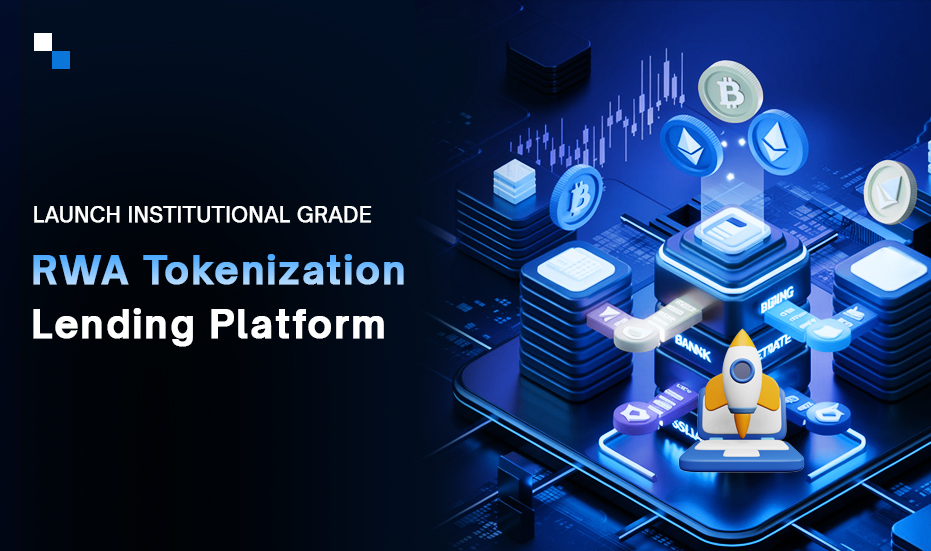
Blockchain Development in Retail: An Overview, Benefits, and Real-World Use Cases
January 15, 2025
Building AI-Agent IDO Launchpads: The $100M Solution for Modern Fundraising
January 15, 2025As blockchain technology continues to gain traction in multiple industries, asset tokenization stands at the forefront of this transformation. Tokenizing real-world assets—ranging from tangible goods like real estate and art to intangible items like intellectual property—has profound implications for global markets. The integration of blockchain with asset tokenization is not just an innovative step for marketplaces; it’s the key to creating more efficient, transparent, and democratized systems of trade.
This blog will explore how blockchain and asset tokenization are changing the landscape of modern marketplaces. It will look into practical applications, challenges, and opportunities that arise as businesses and regulators begin to weave these technologies into their marketplaces. We will also uncover some advanced use cases and examples to give you a deeper understanding of the future possibilities.
The Technological Backbone: Blockchain as the Foundation for Tokenized Marketplaces
At its core, blockchain provides a decentralized and secure way to record transactions in a way that ensures transparency and trust. When paired with asset tokenization, blockchain enables assets to be divided into smaller, tradable units. The integration of blockchain technology into marketplaces addresses multiple pain points of traditional systems by streamlining the process, offering automation via smart contracts, and fostering a borderless, transparent ecosystem.
The convergence of these two technologies brings several distinct advantages, not only for investors but also for businesses operating within these new digital frameworks.
1. Unlocking New Asset Classes and Market Liquidity
One of the most compelling impacts of integrating blockchain and asset tokenization is the ability to unlock previously untapped asset classes. Tokenization allows illiquid assets, such as private equity, art, or collectibles, to be broken into smaller, tradable pieces. This brings liquidity to markets that were once opaque and challenging to access.
Advanced Use Case: Tokenizing Carbon Credits
One of the innovative integrations of tokenization is in the sustainability sector, particularly carbon credits. Traditional carbon credit trading is cumbersome, with centralized exchanges and complex verification processes that can limit market participation. However, by tokenizing carbon credits, they can be easily traded on decentralized platforms, providing greater transparency, traceability, and efficiency.
Example: The ClimateTrade platform is integrating blockchain to tokenize carbon credits, allowing companies to offset their emissions by purchasing tokenized carbon credits. This integration enables seamless cross-border trading and brings liquidity to a market that was previously hindered by inefficiencies.
2. Decentralizing Ownership and Creating Peer-to-Peer Markets
In traditional markets, ownership and control are often concentrated within a few hands—whether it’s the ownership of real estate, art, or other high-value assets. Blockchain and asset tokenization eliminate intermediaries, enabling peer-to-peer (P2P) marketplaces. By decentralizing ownership, tokenization allows individuals to directly trade assets without needing to rely on centralized authorities or third-party intermediaries.
Advanced Use Case: Tokenization in Peer-to-Peer Lending
The peer-to-peer (P2P) lending market stands to benefit immensely from tokenized assets. When tokenized, loans, real estate, or even intellectual property can be divided into smaller, fungible units, making it possible to crowdfund or trade shares of loans directly among individuals.
Example: Addi is a blockchain-powered platform focused on tokenizing small business loans. By tokenizing loans, it enables small and medium-sized enterprises (SMEs) to access capital from a broader pool of investors without relying on traditional financial institutions. This creates an open and decentralized lending ecosystem where participants can invest in fractionalized assets, ensuring greater market efficiency and inclusion.
3. Automating Complex Transactions and Streamlining Compliance
One of the more practical applications of blockchain and tokenization in marketplaces is the automation of complex and multi-step transactions through the use of smart contracts. These self-executing contracts are pre-programmed with rules that automatically carry out specific actions once conditions are met—enabling faster, more reliable trades.
Smart contracts can also facilitate compliance with regulations in a fully automated manner. This is especially valuable in markets with complex legal frameworks, such as securities, real estate, or financial products. Blockchain’s decentralized and immutable nature means that all transactions are verifiable in real-time, making audits, reporting, and compliance more seamless.
Advanced Use Case: Tokenized Real Estate Transactions
The real estate sector is embracing blockchain and tokenization to simplify the buying, selling, and leasing process. Tokenization of real estate not only allows fractional ownership but also streamlines transactions with smart contracts, ensuring automatic and compliant transfers of ownership.
Example: Property Nest, a blockchain platform for real estate investment, uses smart contracts to facilitate the purchase and transfer of tokenized real estate assets. By automating legal and regulatory compliance directly within the smart contract, Property Nest ensures that transactions are both faster and less error-prone, eliminating the need for time-consuming paperwork and intermediaries.
4. Enhancing Digital Identity and Security of Transactions
Blockchain’s integration with asset tokenization also plays a crucial role in improving the security and integrity of digital identities. With tokenized assets, ownership is linked directly to cryptographic keys, making it nearly impossible for fraudulent activities to take place. This enhancement extends to the entire marketplace infrastructure, including Know Your Customer (KYC) and Anti-Money Laundering (AML) compliance.
Digital identity management via blockchain can also lead to enhanced privacy for participants in tokenized marketplaces. Tokenized assets, such as NFTs (non-fungible tokens), can be uniquely tied to specific digital identities, making verification of ownership easier and more secure.
Advanced Use Case: Digital Identity for Tokenized Collectibles
In the realm of digital collectibles, such as NFTs, secure identity verification is essential to ensure ownership rights are legitimate. Using blockchain-based identity solutions, marketplaces for NFTs can offer verified ownership through a secure, immutable record.
Example: Uphold is integrating blockchain-based identity verification to ensure that NFT owners are correctly matched with their digital assets. By tying NFTs to a verified identity, the platform provides additional security and eliminates counterfeit risks. This process ensures that buyers are purchasing authentic tokens tied to a real, verified owner.
5. Tokenization Enabling Secondary Market and Cross-Border Trade
By removing geographical barriers, tokenized assets open the doors to global markets. Whether it’s a tokenized piece of artwork or a real estate property, assets can be traded seamlessly across borders, fostering global liquidity. Furthermore, with blockchain platforms offering 24/7 access, marketplaces become much more dynamic, facilitating around-the-clock trading and lowering the dependency on local time zones.
Advanced Use Case: Tokenized Art Auction Platforms
The art market is notoriously illiquid and opaque, with limited access to high-value pieces for smaller investors. Blockchain and asset tokenization are solving these problems by enabling the creation of digital art auctions that allow fractional ownership and borderless trading.
Example: Artory, an online auction platform, is using blockchain to tokenize high-value artwork, enabling artists, collectors, and investors to buy and sell fractionalized shares of paintings, sculptures, and other works of art. This global reach and 24/7 availability unlock significant liquidity and democratize access to a market that was once dominated by a select few.
6. Creating Real-Time Asset Tracking and Supply Chain Efficiency
Another exciting innovation is the integration of blockchain and asset tokenization for supply chain management. Tokenization can be applied to track every step of a product’s journey—from raw materials to finished goods—on a blockchain, providing a secure and real-time audit trail for each asset. This is particularly useful for high-value assets like luxury goods, pharmaceuticals, or rare collectibles, where provenance and authenticity are paramount.
Advanced Use Case: Tokenizing Luxury Goods
In luxury markets, consumers are increasingly concerned with the authenticity of the items they purchase. Blockchain enables brands to tokenize luxury goods, providing buyers with a verified proof of authenticity and ownership.
Example: Luxury Ledger has launched a blockchain-based platform to tokenize luxury watches. Each watch is given a unique token that tracks its ownership history, ensuring buyers know their purchase is legitimate. This not only protects against counterfeiting but also enhances resale value by providing a verified history of the product.

Conclusion
The integration of blockchain and asset tokenization into modern marketplaces is already creating profound shifts across industries. By unlocking new asset classes, decentralizing ownership, automating complex transactions, enhancing security, and enabling global trade, these technologies are laying the foundation for a new era of digital commerce. As blockchain continues to evolve, its application in marketplaces will unlock even more transformative possibilities, allowing businesses and investors to operate in ways that were previously unimaginable.
The future of marketplaces is tokenized, decentralized, and powered by blockchain—setting the stage for a more transparent, inclusive, and efficient global economy.




